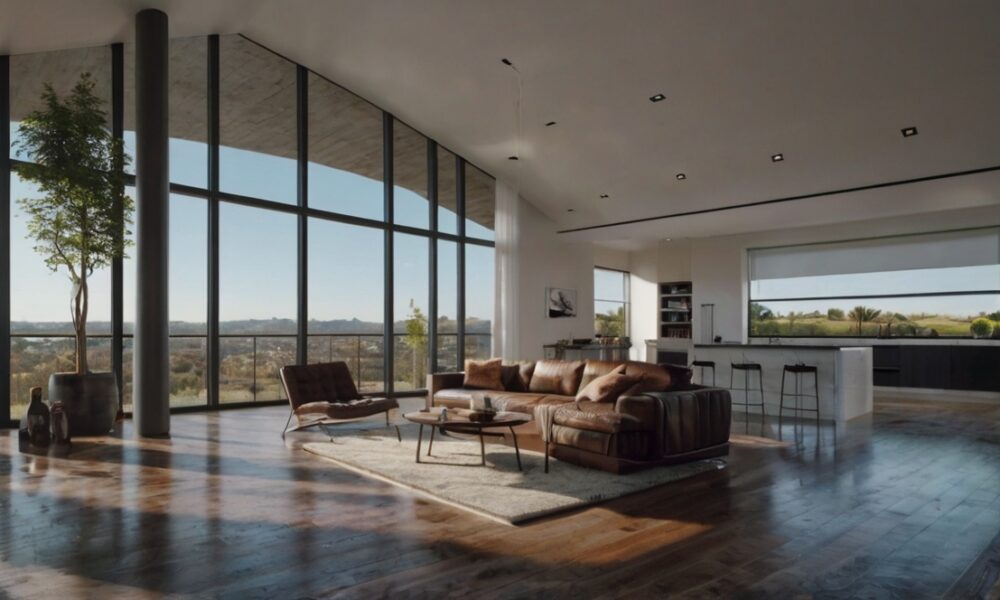Sustainable Living Through Real Estate Tech: Green Building Innovations

Sustainable living is not just a trend; it’s a necessity. As our planet faces the repercussions of climate change, innovative solutions are crucial. One significant area making strides is real estate tech, particularly in green building innovations. These advancements not only benefit the environment but also improve quality of life and reduce operational costs. Let’s explore how technology in real estate is paving the way for a greener future.
Understanding Green Building
Green building refers to the practice of creating structures using environmentally responsible processes. This means efficient use of resources throughout a building’s life cycle. From design to demolition, every stage aims to reduce the negative impact on the environment.
Key Elements of Green Buildings
There are several core elements that define green buildings:
Energy Efficiency:
Utilizing systems and appliances that consume less energy.
Water Efficiency:
Implementing solutions to reduce water usage and promote recycling.
Materials:
Using sustainable and recyclable materials in construction.
Indoor Environmental Quality:
Ensuring healthy indoor air quality and natural lighting.
The Role of Technology in Green Building
Technology plays a crucial role in enhancing the efficiency and effectiveness of green buildings. Several innovations are transforming the real estate industry.
Smart Home Technologies
Smart homes are a significant part of sustainable real estate. These homes are equipped with devices that can be controlled remotely. They help in reducing energy consumption and increasing security.
Smart Thermostats
Smart thermostats learn from homeowners’ behaviors to adjust temperatures accordingly. This ensures optimal energy use without sacrificing comfort.
Energy Monitoring Systems
Energy monitoring systems track usage in real-time. They provide insights into where energy is being wasted and suggest ways to improve efficiency.
Renewable Energy Integration
Renewable energy sources are fundamental to green buildings. Innovations in this area are making it easier to incorporate these sources into real estate projects.
Solar Panels
Solar panels are becoming more efficient and affordable. They convert sunlight into electricity, significantly reducing reliance on fossil fuels.
Wind Turbines
Small-scale wind turbines are also being used in residential and commercial properties. They harness wind energy to generate electricity.
Sustainable Materials
The choice of materials is crucial in green building. Innovative materials are now available that are not only sustainable but also durable and cost-effective.
Recycled Materials
Using recycled materials in construction reduces waste and the need for new raw materials. This includes recycled steel, concrete, and glass.
Biodegradable Materials
Biodegradable materials like bamboo and mycelium are gaining popularity. They decompose naturally, reducing the environmental footprint.
Benefits of Green Building Innovations
Green building innovations offer numerous benefits, making them an attractive option for developers, homeowners, and communities.
Environmental Impact
The primary benefit is the positive impact on the environment. Reduced energy consumption and waste lead to lower greenhouse gas emissions.
Economic Advantages
Green buildings often have lower operating costs. Energy-efficient systems and materials can lead to significant savings on utility bills.
Health and Well-being
Improved indoor environmental quality leads to better health outcomes for occupants. Natural lighting and air quality contribute to overall well-being.
Increased Property Value
Properties with green certifications often have higher market values. They attract environmentally conscious buyers willing to pay a premium.
Case Studies in Green Building Innovations
The Edge, Amsterdam
The Edge is one of the world’s most sustainable office buildings. It uses smart technology to manage energy consumption and create a comfortable working environment.
Features
Energy Efficiency:
The building generates more electricity than it consumes.
Smart Systems:
It has an advanced lighting system that uses sensors to adjust brightness.
Water Management:
Rainwater is collected and reused for various purposes.
Bullitt Center, Seattle
The Bullitt Center is another exemplary green building. It aims to be energy and water self-sufficient.
Features
Solar Energy:
The roof is covered with solar panels that generate enough energy to meet all its needs.
Water Efficiency:
A rainwater collection system supplies the building’s water needs.
Sustainable Materials:
It’s constructed using locally sourced, non-toxic materials.
Challenges and Future Directions
Despite the advancements, there are challenges in the widespread adoption of green building technologies. Initial costs can be high, and there is a need for skilled labor to implement these innovations effectively.
Overcoming Barriers
Incentives:
Government incentives and subsidies can help offset initial costs.
Education and Training:
Investing in education and training for builders and developers is crucial.
Public Awareness:
Increasing public awareness about the benefits of green buildings can drive demand.
Future Innovations
The future of green building looks promising with continuous technological advancements. Emerging trends include the use of artificial intelligence (AI) to optimize building operations and the integration of blockchain for better resource management.
Conclusion
Green building innovations in real estate tech are crucial for sustainable living. They offer numerous environmental, economic, and health benefits. As technology advances, these innovations will become more accessible and widespread. Embracing these changes today can lead to a more sustainable and prosperous future for all.





